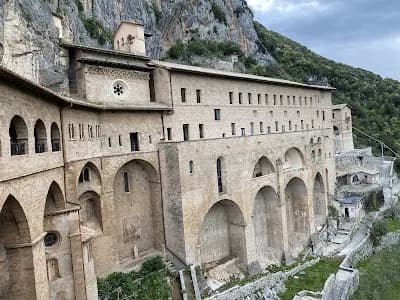
St. Benedict
The Father of Western Monasticism
"Ora et Labora (Pray and Work)"
Saint Facts
- Origin:
- Italy
- Gender:
- Male
- Vocation:
- Laity
- Birth:
- 480
- Feast Day:
- Jul 11
- Death:
- 547
Saint Details
St. Benedict of Nursia, born in 480 in Nursia, Italy, is one of the most influential figures in Christian history. He is often called the "Father of Western Monasticism" for his foundational role in shaping monastic life in Europe. Born into a noble family, Benedict was sent to Rome for his education but became disillusioned with the city"s moral decay. Seeking a life of solitude and prayer, he retreated to Subiaco, where he lived as a hermit in a cave for three years. His holiness attracted followers, and he eventually established twelve small monastic communities in the region. In 529, Benedict moved to Monte Cassino, where he founded the famous Monte Cassino Abbey. It was here that he wrote the Rule of St. Benedict, a guide for monastic life that emphasized prayer, work, and community living. This rule became the cornerstone of Western monasticism and influenced countless religious orders. Benedict died in 547, leaving behind a legacy that would shape Christianity for centuries.
Associated Holy Sites

Shrine of the Sacred Cave of St. Benedict
Via S. Benedetto, snc, 00028 Subiaco RM, Italy

St. Benedict's Abbey
1020 N 2nd St Abbey, Atchison, KS 66002, USA

Abbey of Montecassino
Via Montecassino, 03043 Cassino FR, Italy

Ruins of the Basilica St. Benedict
Piazza S. Benedetto, 06046 Norcia PG, Italy
Details for: Shrine of the Sacred Cave of St. Benedict
Nestled in Subiaco, Italy, the Shrine of the Sacred Cave of St. Benedict holds profound religious significance for Catholics worldwide. This sacred site marks the place where St. Benedict, the founder of Western monasticism, lived as a hermit in the 6th century. Pilgrims journey here to connect with the spiritual heritage of this influential saint, seeking inspiration and a deeper understanding of his life and profound impact on the development of monastic life and Christian spirituality. The cave itself, a place of prayer and solitude for St. Benedict, remains a powerful focal point for reflection and devotion, attracting countless visitors annually who come to honor his legacy and seek spiritual renewal. Its enduring sanctity draws pilgrims seeking a tangible link to a pivotal figure in Catholic history.
🙏 No spam. Just grace. Unsubscribe anytime.